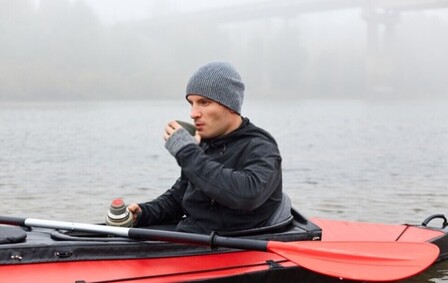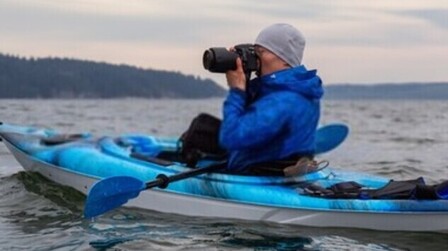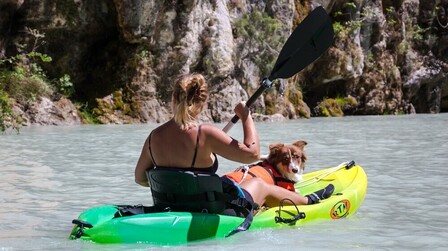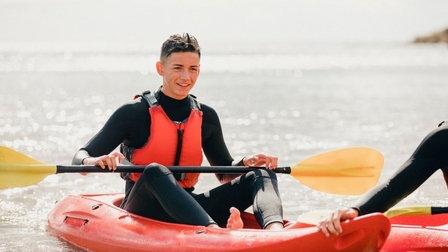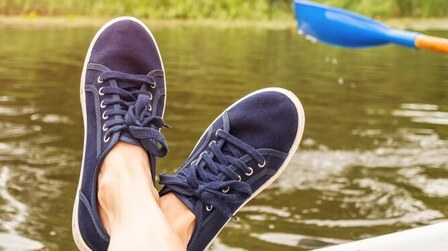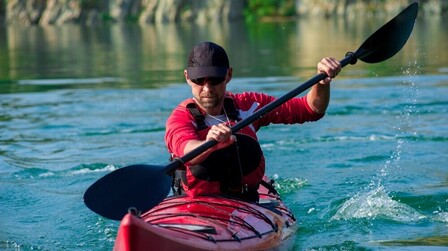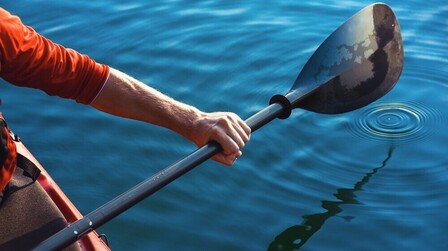Are you a new kayaker?
Well, there is a good chance that you may experience some low back pain because of the posture you’re in while sitting in a kayak, which makes your experience become terrible.
Here is how to avoid back pain when kayaking:
Exercise More

When kayaking, some muscle groups are used more than others, mainly around your back, spine, and torso.
Wondering which muscle groups are utilized while you’re paddling? Well, here they’re:
- Obliques and abdominals: These muscles run along your body sides to connect to your abdominals and back.
- Lower and upper trapezius: This is where your neck, spine, and shoulder blades receive support while your body is moving.
- Rhomboids: Located in the upper middle back area. You’ll feel them clearly when bringing your shoulder blades together after finishing a paddle stroke.
- Latissimus Dorsi: These muscles are in the lower back area
Exercising is a great way to strengthen these muscle groups to prevent further spasming or breaking down after a long day on the water.
Below are some recommended exercises for you:
- Cat stretches
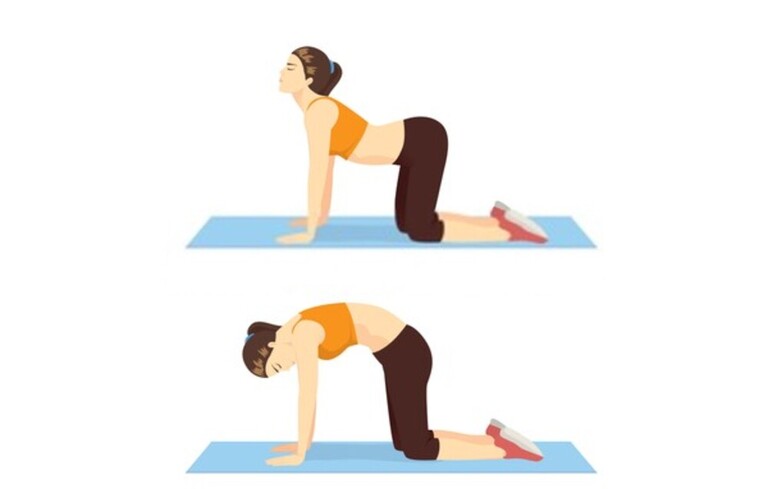
- Pelvic tilts

- Supermans

- Lower back rotational stretches

- Knee-to-chest stretches
- Abdominal routines with a medicine ball

- Bridges

- Crunch

- Supine Toe Tap
- Plank

- Bird dog

Stretching Before Kayaking
Just like before swimming, running, or hiking, you should stretch your body prior to hitting the water. Stretching on those muscle groups used while kayaking will help warm them up properly, get the blood flowing to them, and be ready for repeated motion.

Before kayaking, stretch your body by doing some neck and arm circles, toe reaches, and trunk twists for 15-20 minutes.
A few simple back stretches are also highly recommended, like bending over to touch your toes.
Pack Enough Water For Hydration
Before starting your kayaking trip, make sure that you carry enough fresh water for hydration.

While saving you from thirst and tiredness, this helps save you from muscle strains and spasms whilst keeping the cartilage pliable and soft for joint protection.
Dehydration might cause your body to feel painful and ache because of the huge reduction in perfusion pressure and blood pressure.
While sweating is a natural way to cool down your body, if not provided enough water, it results in adversely affecting skeletal muscle cell function and cell dehydration.
Know Your Health Status & Your Limit
Before planning out a kayaking trip, aside from choosing the right kayak, you should consider thoroughly your limit and health conditions to determine the right distance and pace.
It’s inappropriate to keep paddling for three hours on the first kayaking trip.

If you do that, your spine and lower back are the two first body parts suffering serious pain. In some cases, that might lead to injuries.
Now, this is the most frequently asked question – can I go kayaking if I have back pain?
The answer is yes, you can. However, you should get advice from your doctor as well as find the right kayak to support these sensitive areas better. Setting up a proper kayaking plan is another thing to remember.

Never overdoing it. If pain starts to set it, just take a break or call it a day.
Choose The Right Kayak

Make sure that:
- The footrest is easy to reach without straining your body
- The seat is padded properly to your needs for the maximum comfort and support

- The type is suitable for your body size and health conditions.

Sit Properly While Kayaking

Sit up straight, and always mind your posture while paddling because most people have a tendency to slouch.
While slouching puts pressure on your spine and lower back, this improper posture makes your strokes less efficient. If you need tips to sit properly while kayaking, here are some:
Before going out on the water for several hours, make a few short kayaking trips so that your body learns to get used to the up-straight posture better
Adjust your foot pegs as long as your knees are bent about 6” to 8” of distance from the back of your knees whilst feet are kept in front of you
Now, stick your stomach out in front of you to arch your back. Use your sit bones.
Take Post-Kayak Stretches
After kayaking, try some dedicated stretches to relax your body, keeping it from feeling sore the next day.

Here are some of our tips for you:
- Use pain relievers and anti-inflammatories
- Heat and massage
- Apply some ice cubes on sore areas
- Try to do some planks and bridges
- Rest properly for 3-5 days or a week before joining another kayaking trip
Things to avoid: laying down or sitting too much at home since this puts more pressure on your muscles.
Conclusion
Our experts have just shared with you how to avoid back pain when kayaking. We tried to arrange these tips from what to prepare at home, what to do before, while, and after kayaking. Hopefully, they helped you more on your next trips. Thanks for reading!



